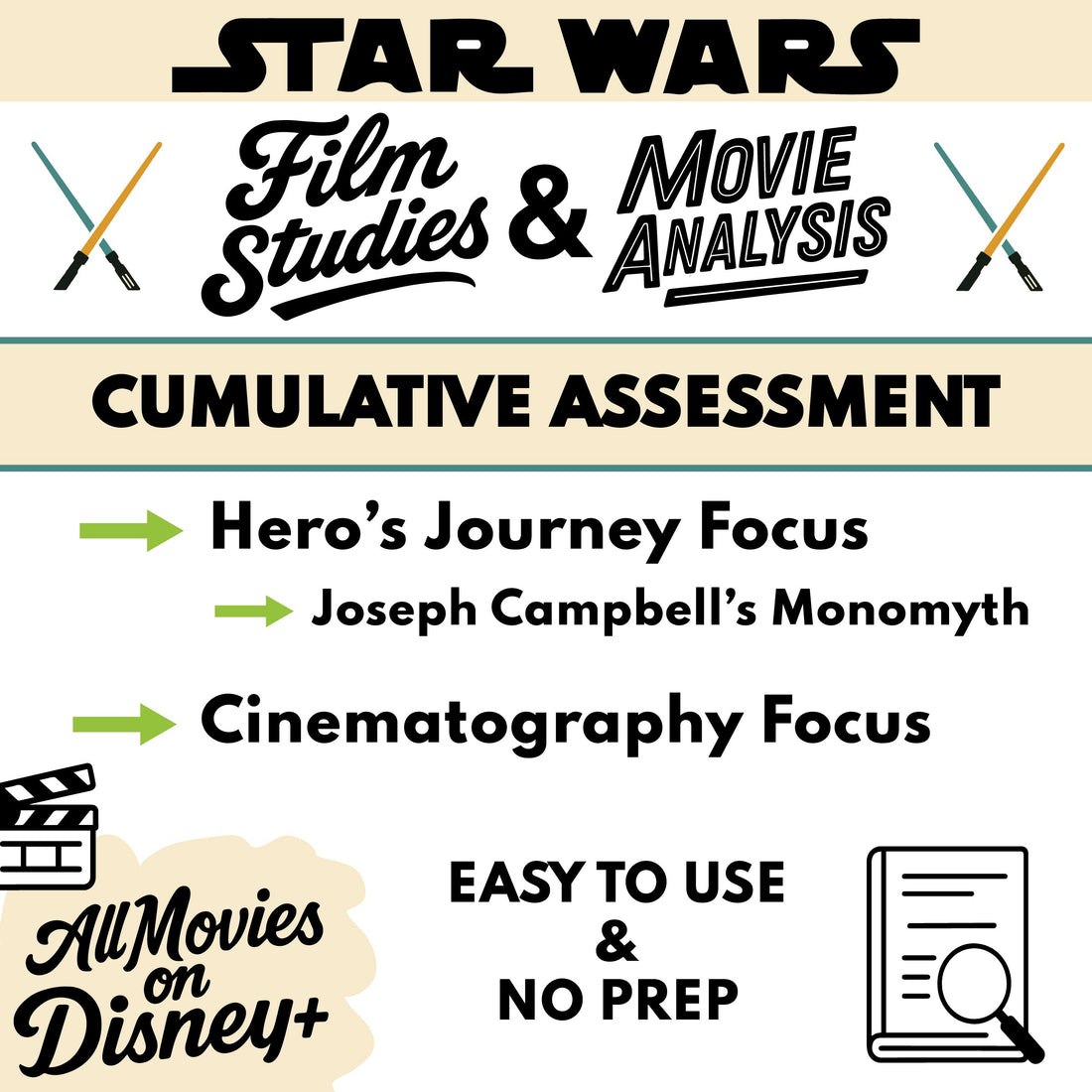
Joseph Campbell, the Monomyth, and Star Wars in the High School Classroom
Share
The Star Wars Saga Assessment — Hero’s Journey & Cinematography Focus is a 9-week stand-alone resource that pairs Joseph Campbell’s Monomyth with cinematic study. Students map Luke, Anakin, and Rey’s journeys across all nine films, while evaluating how editing, sound, and cinematography alter the Monomyth. Teachers can extend analysis with the All 9 Episodes Bundle for deeper scene-by-scene evidence.
Standards Connection
Aligned to CCRA.R.1 (textual and cinematic evidence), CCRA.R.2 (determine central ideas/themes), CCRA.W.1 (argument writing), and CCRA.SL.1 (discussion). These standards highlight rigorous academic skills applied to film study.
Lesson Flow
- Note-taking: Students complete structured trackers for Campbell’s Hero’s Journey stages during film screenings.
- Craft focus: They also log film techniques (editing, sound, cinematography) that shift meaning or audience perception.
- Comparison: After the saga, students compare how different trilogies adapt or diverge from the Monomyth.
- Writing tasks: Two focused responses require concise explanation: one on craft, one on schema.
Optional Extension (Teacher-Created)
Not included in the product PDFs.
- Assign a creative writing task: design a new hero whose journey intentionally breaks Campbell’s model.
- Host a debate: “Does Rey complete or revise Campbell’s Monomyth?”
Teacher FAQ
Q: Do I need to screen all nine films?
A: Yes, the assessment is designed for saga-wide comparison, though excerpts can be substituted for full screenings.
Q: Is there an answer key?
A: Yes, model responses and exemplar notes are included for teacher guidance.
Q: Can this align with mythology units?
A: Absolutely. It directly applies Campbell’s Monomyth to a modern epic with broad student appeal.
Related Star Wars classroom resources
- Star Wars Saga Assessment — Hero’s Journey & Cinematography Focus: compare trilogies and build a concise schema of the Monomyth.
- Star Wars Saga Film Quiz & Movie Worksheet Bundle (All 9 Episodes): support the Monomyth study with full-episode guides at 30% off.
- Episode IV — A New Hope Movie Guide: explore Luke’s call to adventure and faith vs. instruments in the trench run.
Skills Addressed: evidence-based analysis, connecting myth to film, comparing across eras, explanatory writing, and group discussion.